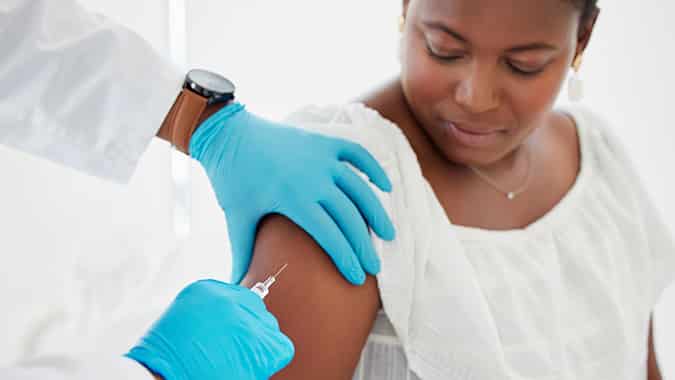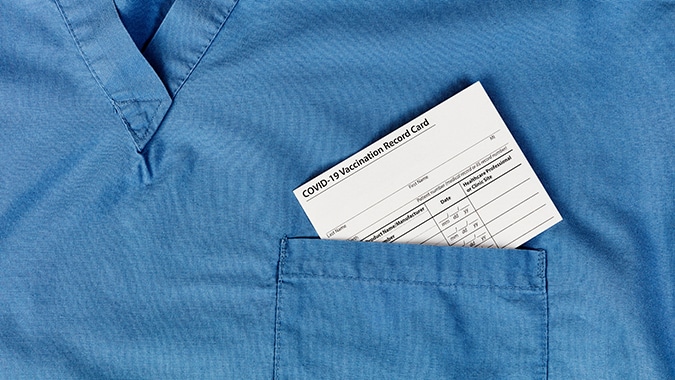The Internal Revenue Service has released a state-by-state breakdown of the roughly nine million people receiving a special mailing this month encouraging them to see if they're eligible to claim an Economic Impact Payment.
The IRS will mail the letters to people who typically aren't required to file federal income tax returns but may qualify for an Economic Impact Payment. The letter urges recipients to visit the special Non-Filers: Enter Payment Info Here tool on IRS.gov before the October 15 deadline to register for an Economic Impact Payment.
"The IRS continues to work hard to reach people eligible for these payments," said IRS Commissioner Chuck Rettig. "These mailings are the latest step by the IRS to reach as many people as possible for these important payments. We are releasing this state-by-state information so that state and local leaders and organizations can better understand the size of this population in their communities and assist them in claiming these important payments. Time is running out to claim a payment before the deadline."
These letters (PDF) PDF are part of a final stage of the IRS's sweeping outreach and public awareness campaign on the Economic Impact Payments that began in March. These efforts included IRS outreach to thousands of partner groups across the nation, including partner groups serving underserved communities, people experiencing homelessness, and those whose primary language isn't English.
So far, more than 7 million people have already used the Non-Filers tool to register for a payment.
This month's letters, delivered from an IRS address, are being sent to people who haven't filed a return for either 2018 or 2019. Based on an internal analysis, these are people who don't typically have a tax return filing requirement because they appear to have very low incomes based on Forms W-2 and 1099, and other third-party statements available to the IRS.
The breakdown below shows the number of individuals in each state to whom the IRS is sending a letter.
The letter urges the recipient to register at IRS.gov by October 15 in order to receive a payment by the end of the year. Individuals can receive up to $1,200, and married couples can receive up to $2,400. People with qualifying children under age 17 at the end of 2019 can get up to an additional $500 for each qualifying child.
The letter, officially known as IRS Notice 1444-A, is written in English and Spanish and includes information on eligibility criteria. If they haven't done so already, this letter urges eligible individuals to register using the free Non-Filers: Enter Payment Info Here tool, available in English and Spanish and only on IRS.gov. To help address fraud concerns, a copy of the letter (PDF) PDF is available on IRS.gov.
The IRS cautions that receiving a letter is not a guarantee of eligibility. An individual is likely eligible for an Economic Impact Payment if they:
- are a U.S. citizen or resident alien;
- have a work-eligible Social Security number; and
- can't be claimed as a dependent on someone else's federal income tax return.
For more information on eligibility requirements, see the Economic Impact Payment eligibility FAQs on IRS.gov.
The registration deadline for non-filers to claim an Economic Impact Payment through the Non-Filers tool is October 15, 2020. People who are eligible should not wait to receive a letter and should register now. Alternatively, people can wait until next year and claim the recovery rebate credit on their 2020 federal income tax return by filing in 2021.
The IRS emphasized that anyone required to file either a 2018 or 2019 tax return should file the tax return and not use the Non-Filers tool. That tool is designed for people with incomes typically below $24,400 for married couples, and $12,200 for singles. This includes couples and individuals who are experiencing homelessness.
Those unable to access the Non-Filers tool may submit a simplified paper return following the procedures described in the Economic Impact Payment FAQs on IRS.gov.
People can qualify for a payment, even if they don't work or have no earned income. But low- and moderate-income workers and working families eligible to receive special tax benefits, such as the Earned Income Tax Credit or Child Tax Credit, cannot use this tool. They will need to file a regular tax return as soon as possible. The IRS will use their tax return information to determine and issue any Economic Impact Payment for which they are eligible.
Anyone using the Non-Filers tool can speed up the arrival of their payment by choosing to receive it by direct deposit. Those not choosing this option will get a check.
Beginning two weeks after they register, people can track the status of their payment using the Get My Payment tool, available only on IRS.gov.
| State | State Postal Code | Total Number of EIP Payments |
|---|---|---|
| Armed Forces Americas | AA | 522 |
| Armed Forces Non-Americas | AE | 3,096 |
| Alabama | AL | 148,242 |
| Armed Forces Pacific | AP | 2,177 |
| Alaska | AK | 30,807 |
| Arizona | AZ | 239,037 |
| Arkansas | AR | 91,386 |
| California | CA | 1,186,896 |
| Colorado | CO | 177,502 |
| Connecticut | CT | 89,458 |
| Delaware | DE | 32,875 |
| District of Columbia | DC | 33,964 |
| Florida | FL | 567,425 |
| Georgia | GA | 348,631 |
| Hawaii | HI | 48,767 |
| Iowa | IA | 71,382 |
| Idaho | ID | 40,943 |
| Illinois | IL | 309,972 |
| Indiana | IN | 150,154 |
| Kansas | KS | 69,595 |
| Kentucky | KY | 117,136 |
| Louisiana | LA | 159,575 |
| Maine | ME | 32,346 |
| Maryland | MD | 192,153 |
| Massachusetts | MA | 187,768 |
| Michigan | MI | 270,590 |
| Minnesota | MN | 115,914 |
| Mississippi | MS | 86,669 |
| Missouri | MO | 159,077 |
| Montana | MT | 30,977 |
| Nebraska | NE | 38,201 |
| Nevada | NV | 94,472 |
| New Hampshire | NH | 29,680 |
| New Jersey | NJ | 216,145 |
| New Mexico | NM | 72,333 |
| New York | NY | 537,726 |
| North Carolina | NC | 245,623 |
| North Dakota | ND | 19,596 |
| Ohio | OH | 283,194 |
| Oklahoma | OK | 123,473 |
| Oregon | OR | 131,647 |
| Pennsylvania | PA | 276,066 |
| Rhode Island | RI | 24,686 |
| South Carolina | SC | 142,382 |
| South Dakota | SD | 19,391 |
| Tennessee | TN | 171,065 |
| Texas | TX | 796,525 |
| Utah | UT | 69,140 |
| Vermont | VT | 13,665 |
| Virginia | VA | 205,600 |
| Washington | WA | 203,978 |
| West Virginia | WV | 27,788 |
| Wisconsin | WI | 111,426 |
| Wyoming | WY | 14,506 |
| Total | 8,863,344 |



